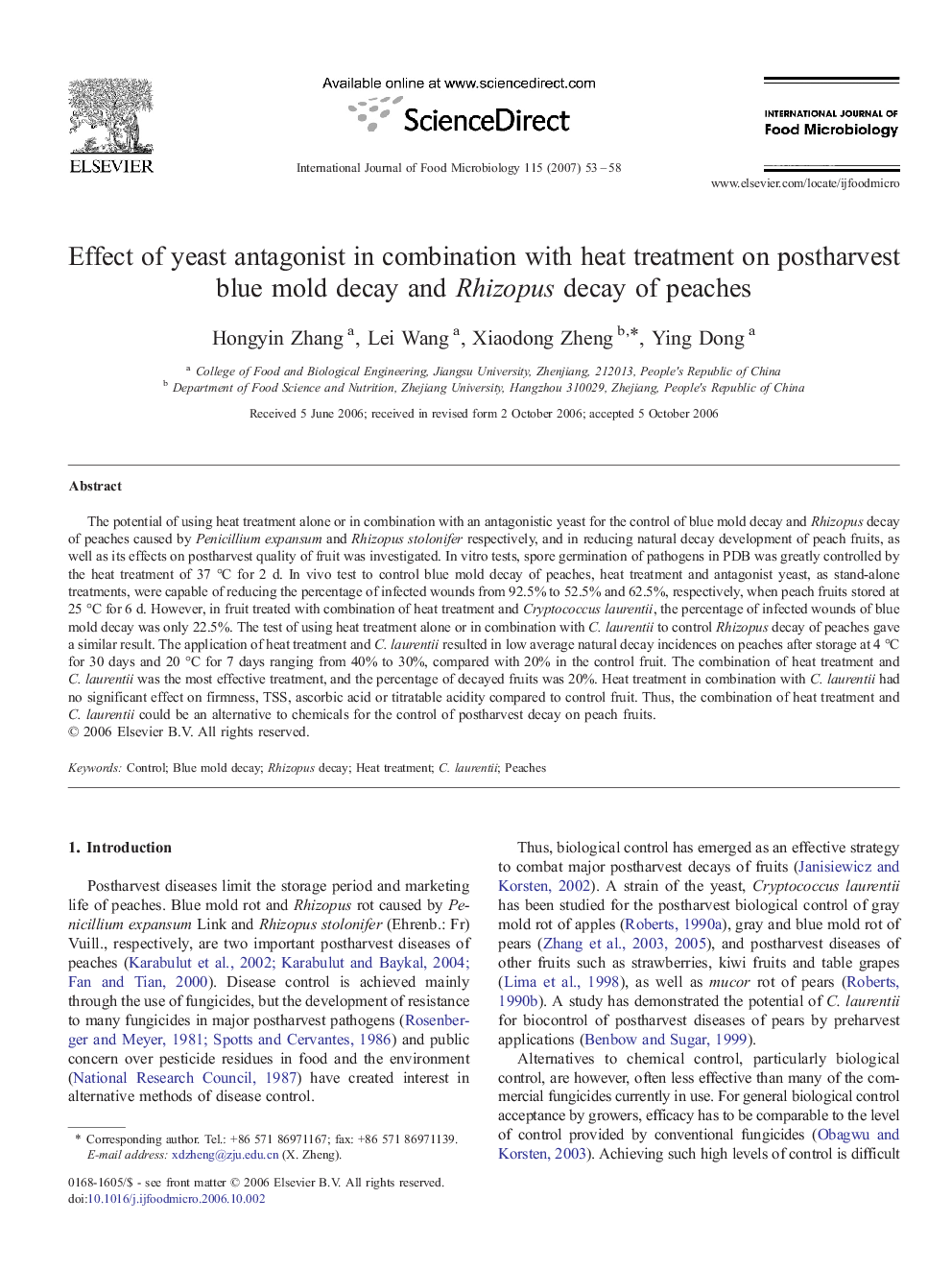| Article ID | Journal | Published Year | Pages | File Type |
|---|---|---|---|---|
| 4369390 | International Journal of Food Microbiology | 2007 | 6 Pages |
The potential of using heat treatment alone or in combination with an antagonistic yeast for the control of blue mold decay and Rhizopus decay of peaches caused by Penicillium expansum and Rhizopus stolonifer respectively, and in reducing natural decay development of peach fruits, as well as its effects on postharvest quality of fruit was investigated. In vitro tests, spore germination of pathogens in PDB was greatly controlled by the heat treatment of 37 °C for 2 d. In vivo test to control blue mold decay of peaches, heat treatment and antagonist yeast, as stand-alone treatments, were capable of reducing the percentage of infected wounds from 92.5% to 52.5% and 62.5%, respectively, when peach fruits stored at 25 °C for 6 d. However, in fruit treated with combination of heat treatment and Cryptococcus laurentii, the percentage of infected wounds of blue mold decay was only 22.5%. The test of using heat treatment alone or in combination with C. laurentii to control Rhizopus decay of peaches gave a similar result. The application of heat treatment and C. laurentii resulted in low average natural decay incidences on peaches after storage at 4 °C for 30 days and 20 °C for 7 days ranging from 40% to 30%, compared with 20% in the control fruit. The combination of heat treatment and C. laurentii was the most effective treatment, and the percentage of decayed fruits was 20%. Heat treatment in combination with C. laurentii had no significant effect on firmness, TSS, ascorbic acid or titratable acidity compared to control fruit. Thus, the combination of heat treatment and C. laurentii could be an alternative to chemicals for the control of postharvest decay on peach fruits.
